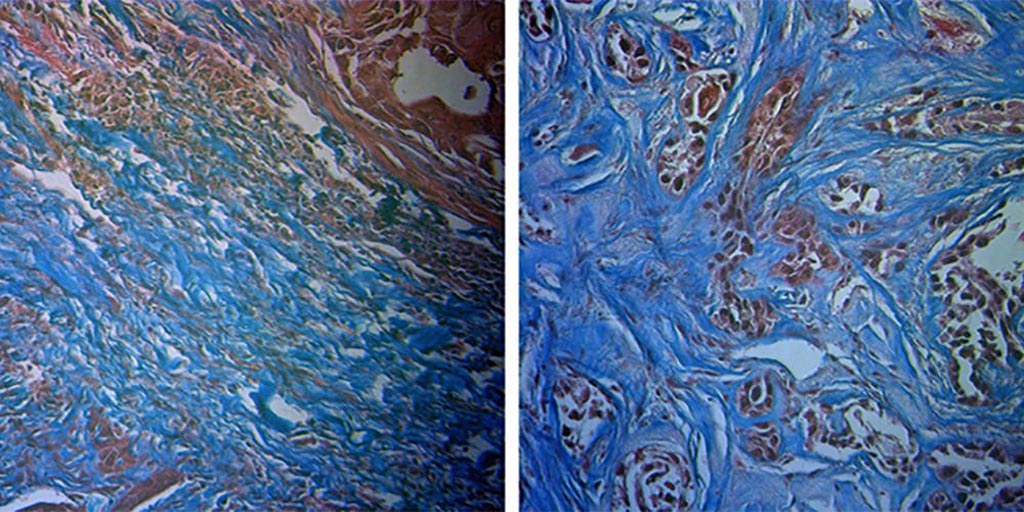Imaging Shows Radiation Resistance in Tumor Microenvironment
By MedImaging International staff writers
Posted on 18 Mar 2019
Noninvasive Raman spectroscopy could spare some patients the toxic side effects of ineffective radiation therapy (RT), claims a new study.Posted on 18 Mar 2019
Researchers at Johns Hopkins University (JHU; Baltimore, MD, USA) and the University of Arkansas (Fayetteville, USA) conducted a study to map radiation-induced biomolecular changes in tumors, and uncover the latent micro-environmental differences between RT-resistant and RT-sensitive tumors. To do so, the researchers cultured human head and neck squamous cell carcinoma (HNSCC) cell lines to grow tumor xenografts in mice, and then measured the molecular specificity and quantitative nature of Raman spectroscopic tissue assessments.

Image: Radiation-sensitive tumor (L), and radiation-resistant tumor (R). Sensitive tumors have more collagen (blue) (Photo courtesy of University of Arkansas).
Labe-free Raman spectra obtained from untreated and treated tumors were subjected to chemometric analysis in order to quantify biomolecular differences in the tumor microenvironment. The results revealed statistically significant differences in lipid and collagen content that could potentially identify treatment-resistant tumors early on in the therapeutic regimen. Histological evaluation of the tumors was consistent with the Raman spectroscopic results. The study was published on February 28, 2019, in Cancer Research.
“Identifying patients with radiation-resistant tumors prior to commencing treatment or immediately after it has begun would significantly improve response rates and help these patients avoid the toxic side effects of ineffective radiation therapy,” said biomedical engineer Narasimhan Rajaram, PhD, of the University of Arkansas. “Our findings provide a rationale for translating these studies to patients with this as the ultimate goal.”
Raman spectroscopy is a form of molecular spectroscopy based on Raman scattering. When a beam of light interacts with a material, part of it is transmitted, part it is reflected, and part of it is scattered; over 99% of the scattered radiation has the same frequency as the incident beam, but a small portion of the scattered radiation has frequencies different from that of the incident beam. The scattered radiation contains information on the particular atoms or ions that comprise the molecule, the chemical bonds connect them, the symmetry of their molecule structure, and the physico-chemical environment where they reside.
Related Links:
Johns Hopkins University
University of Arkansas














